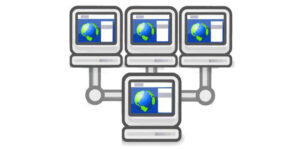
Can Essentialism Help Your Team Avoid Burnout?
Imagine an organization that consistently delivers exceptional results, maintains high employee retention, and fosters a culture of growth and passion. This may seem beyond reach

Imagine an organization that consistently delivers exceptional results, maintains high employee retention, and fosters a culture of growth and passion. This may seem beyond reach

When the pandemic suddenly forced millions of people to work remotely, employers weren’t sure what to do next. Because the transition was nearly instantaneous, this

Sponsored by: Worksuite The case for building a flexible talent network has never been more compelling. During the “Great Resignation” of 2021, 47 million U.S.

As 2022 draws to a close, most organizations are deeply involved in planning, budgeting and forecasting for the coming year. To complete this rigorous process,

The COVID-19 pandemic severely wounded the traditional workplace, causing an even greater need for productivity tools. Even when the pandemic recedes, the workplace will not

A business’s ability to hire and retain talent largely depends on its company culture. But company culture isn’t just about how we get our work

The HR software an organization uses should not just be beneficial for the employer but should have added features so that employees can also benefit
When I was younger and entering the workforce I quickly understood that I do my best work at 5 AM. I have the best ideas,

Virtual teams make great business sense. But before you unleash your workforce, it pays to develop a coordinated technology plan.

Teamwork gets a lot of buzz — but teams often fall short. What can we do to crack the collaboration code? This idea is winning fans

How can you select the best talent to drive corporate entrepreneurship? Look for these 7 key traits

Wildly successful business networking author, Bob Burg shares a vital piece of advice for intrapreneurs — inspired by Yum! Brands CEO, David Novak

Cloud computing offers a viable model for “just in time” talent – tapping just the right resources, at just the right time, in just the right place. But while it creates opportunities for skilled professionals, will others in the world of work be left behind?

As business looks for new sources of competitive advantage, and the contingent workforce swells, how can we apply best practices from “cloud” computing models to human capital strategy?
Let’s face it. Workgroups aren’t what they used to be. Odds are that half the members of any team aren’t employees – and many don’t have offices in the same city – let alone the same building. In an increasingly remote, fluid workforce, how can we ensure cohesive workflow and stellar results?